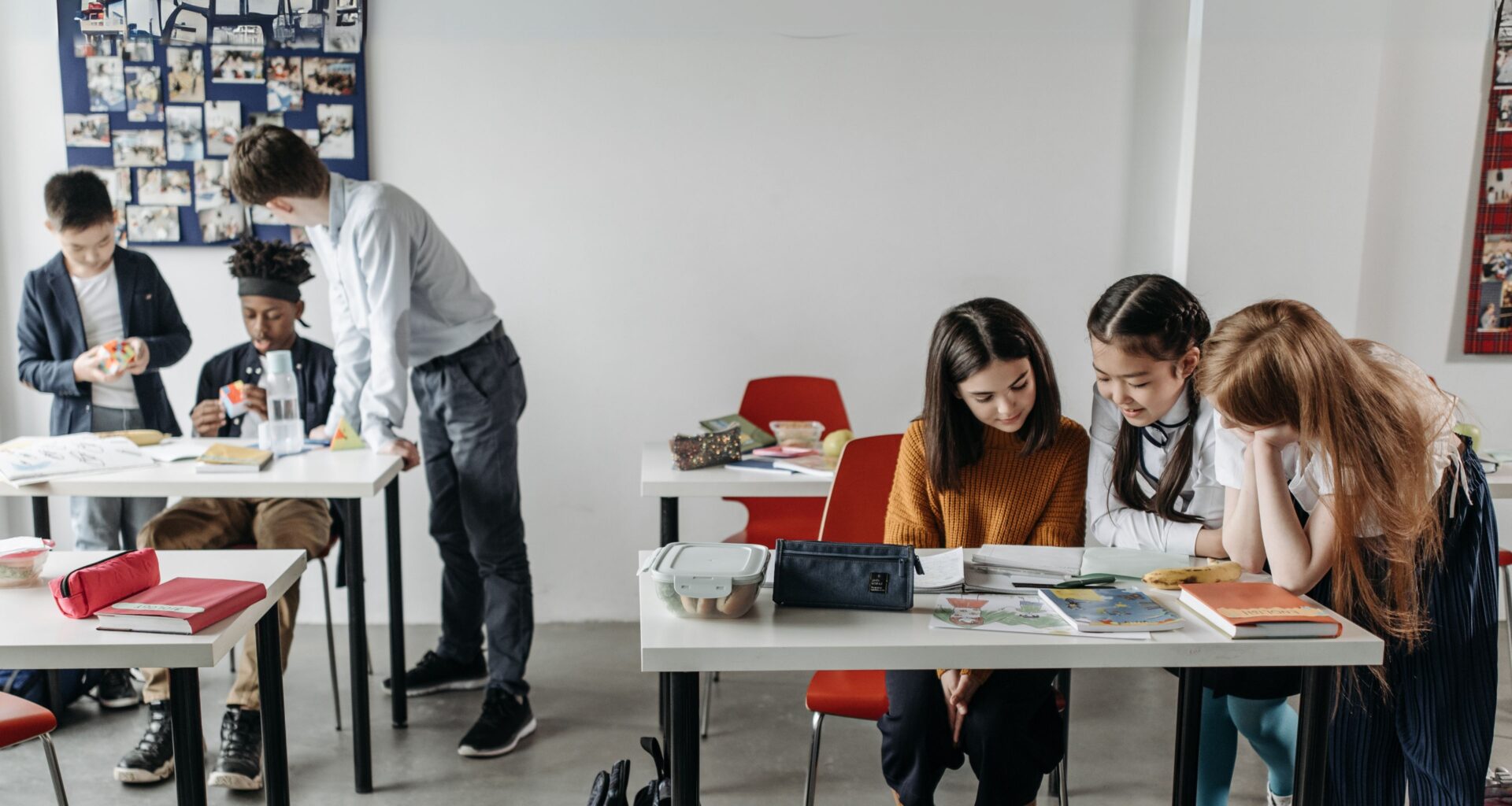Education today is about more than academic attainment—it’s about developing confident, responsible and well-rounded individuals. Senior leaders are increasingly aware that classroom management is a key lever in this process. When done well, it supports not only behaviour and engagement but also wellbeing, emotional growth and social development.
In this article, we explore how effective classroom management contributes to holistic development, share practical strategies for implementation, and highlight how behaviour and character education intersect in today’s classrooms.
The Role of Classroom Management in Holistic Education
Classroom management refers to the strategies and techniques teachers use to maintain an organised, productive and respectful learning environment. While often associated with behaviour control, it plays a far deeper role in supporting pupils’ holistic growth.
A well-managed classroom provides:
- Consistency and structure – promoting a sense of safety and belonging
- Fairness and respect – helping pupils understand boundaries and responsibility
- Focus and motivation – supporting cognitive and academic development
- Opportunities for collaboration – encouraging social and interpersonal skills
- Space for emotional growth – through routines, relationships and reflection
At its best, classroom management enables every child to feel safe, valued and ready to learn.
What Is Holistic Development?
Holistic development is a broad educational approach that nurtures a child’s physical, emotional, intellectual, social and moral growth. Rather than focusing solely on academic performance, it supports a balanced development of personal attributes, life skills and values that prepare pupils for adulthood.
In a holistic learning environment, classroom management ensures:
- Pupils are emotionally safe to express themselves
- Teachers can model and teach self-regulation and resilience
- Expectations are clearly communicated and consistently upheld
- The learning space promotes engagement, cooperation and mutual respect
This approach aligns directly with government guidance and character education frameworks, which stress the importance of developing the whole child.
Why Behaviour Is About More Than Rules
Behaviour policies that rely purely on sanctions often fall short in promoting long-term change. Positive classroom management shifts the focus from punishment to teaching pro-social behaviour.
By helping pupils understand the reasons behind expectations—and the impact of their actions on others—schools promote empathy, responsibility and self-discipline. This is the foundation of character education and aligns with core principles of Social Emotional Learning (SEL).
Key character traits supported through classroom management include:
- Respect – listening actively and treating others kindly
- Responsibility – owning actions and learning from mistakes
- Resilience – bouncing back from setbacks and managing frustration
- Integrity – doing the right thing even when no one is watching
Practical Classroom Management Strategies That Promote Development
Every teacher knows that good behaviour doesn’t happen by accident—it is actively built and nurtured over time. Here are some strategies that support both classroom order and holistic development:
1. Set Clear Expectations from Day One
Establish class rules collaboratively with pupils at the beginning of term. Revisit and reflect on them regularly. When pupils help shape expectations, they are more likely to internalise them.
2. Build Positive Relationships
Strong relationships are the foundation of effective classroom management. Greet pupils by name, show interest in their lives and create a culture of mutual respect.
3. Use Routines to Build Structure
Predictable routines help reduce anxiety and promote independence. From entry procedures to group work transitions, routines help pupils know what to expect—and what is expected of them.
4. Reinforce Positive Behaviour
Catch pupils doing the right thing. Verbal praise, recognition boards and reward systems can reinforce effort, kindness and participation. Focus on intrinsic motivation over extrinsic rewards where possible.
5. Teach Emotional Regulation
Use tools like emotional check-ins, breathing exercises or reflection journals to help pupils recognise and manage their emotions. This links directly to SEL and promotes self-awareness.
6. Respond to Disruption with Empathy
Not all misbehaviour is deliberate. Use restorative approaches when conflict occurs. Ask reflective questions such as: “What happened?” and “What could we do differently next time?”
7. Keep Behaviour Logs for Reflection
Track behaviour patterns to spot triggers and identify pupils who may need additional support. Share this data with pastoral staff or SENCOs when relevant.
The Link Between Classroom Management and SEL
Social Emotional Learning (SEL) and classroom management are deeply connected. SEL equips pupils with the tools to regulate their emotions, build healthy relationships, and make responsible decisions—all of which directly impact classroom behaviour.
By embedding SEL into classroom routines, schools can reduce behaviour incidents while improving engagement, focus and wellbeing.
Examples include:
- Starting the day with a feelings check-in
- Encouraging group discussions about empathy and fairness
- Using role-play to model conflict resolution
- Allowing space for quiet reflection after disagreements
When SEL is integrated into everyday teaching, classroom management becomes more proactive and preventative, rather than reactive.
Supporting Staff Through CPD and Collaboration
Strong classroom management is a skill that improves with reflection and support. School leaders should invest in:
- Ongoing CPD focused on behaviour strategies, trauma-informed practice and SEL
- Mentorship schemes to support early career teachers
- Collaborative planning time to ensure consistent approaches across year groups
- Opportunities for peer observation and feedback
Empowered staff create empowered pupils. A consistent whole-school approach to classroom management reinforces expectations and values, helping pupils feel safe and supported in every classroom.
Monitoring and Improving Behaviour and Development
Tracking classroom behaviour can provide valuable insights—not just for individual pupils, but for improving whole-school strategy. Patterns can reveal:
- Gaps in emotional regulation skills
- Unmet SEN needs
- Classroom environment issues (e.g. seating plans, noise levels)
- The effectiveness of particular strategies or interventions
Satchel Pulse’s Skills tool offers schools a practical way to track behaviour, character development and wellbeing using real-time data. It’s designed to help schools build a clear picture of what’s working, where to improve and how to support pupils holistically.
With Skills, schools can:
- Track the development of SEL and character traits
- Identify pupils in need of additional support
- Celebrate strengths and improvement
- Tailor interventions with confidence
Final Thoughts: Building Better Behaviour, Together
Classroom management is not just about discipline—it’s about creating an environment where every pupil can thrive. When classrooms are calm, structured and positive, pupils are more engaged, feel emotionally safe, and are better able to learn.
By embedding holistic principles into your approach—focusing on relationships, emotional support and character development—classroom management becomes a powerful tool for transforming lives.
Senior leaders have a unique opportunity to support this work by investing in training, encouraging collaboration, and using data to drive improvement.
When we manage classrooms with compassion and clarity, we prepare young people not just for exams, but for life.
Author: Hope Marvin
Date Published: May 23, 2025






